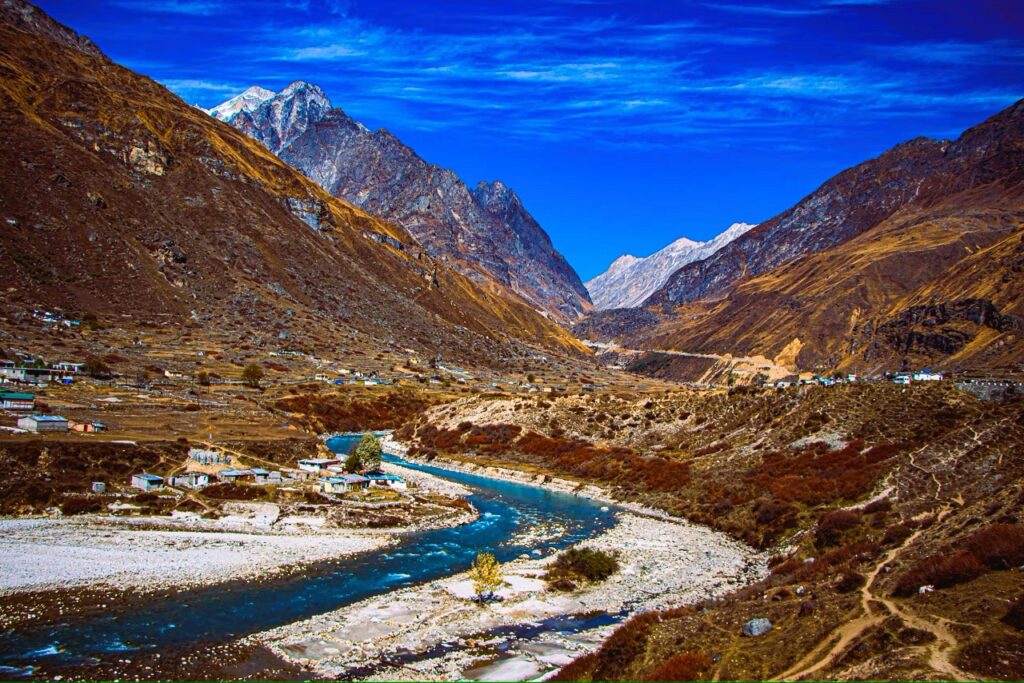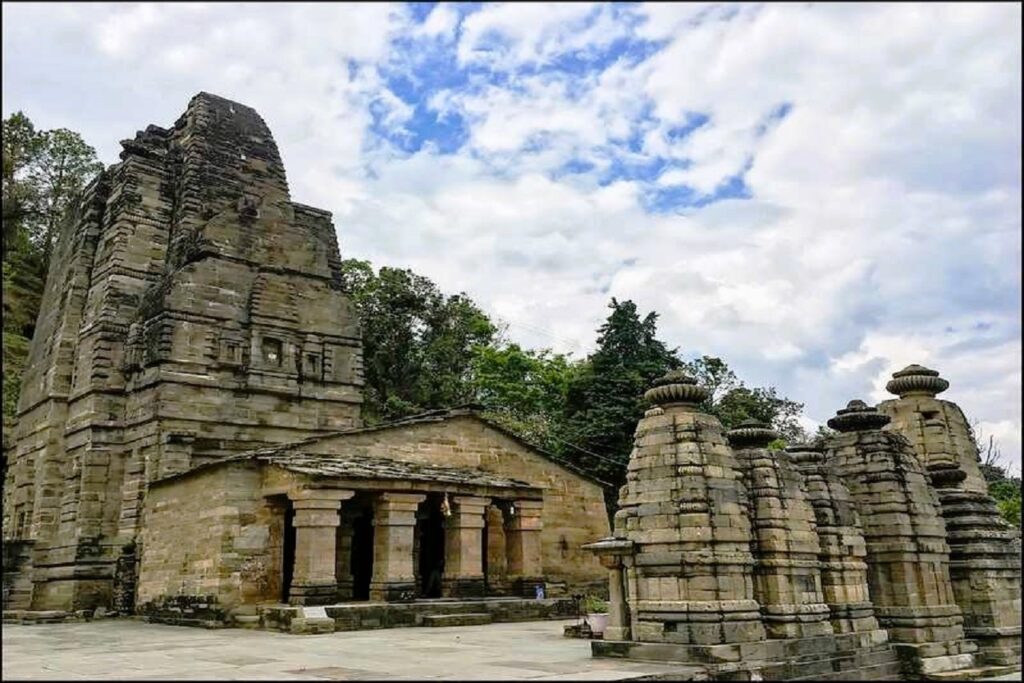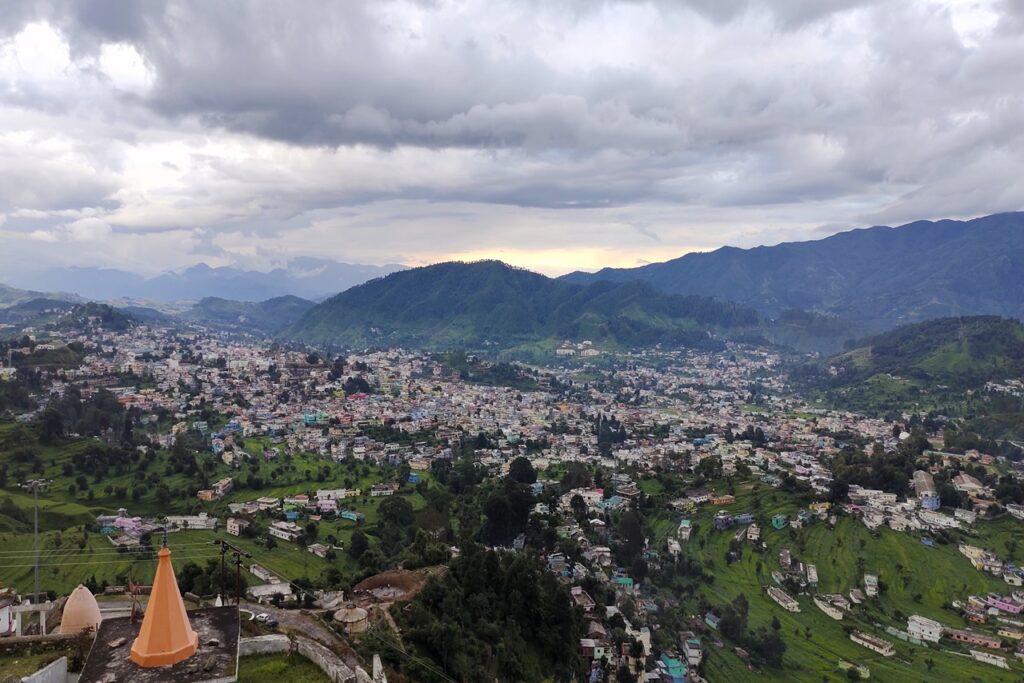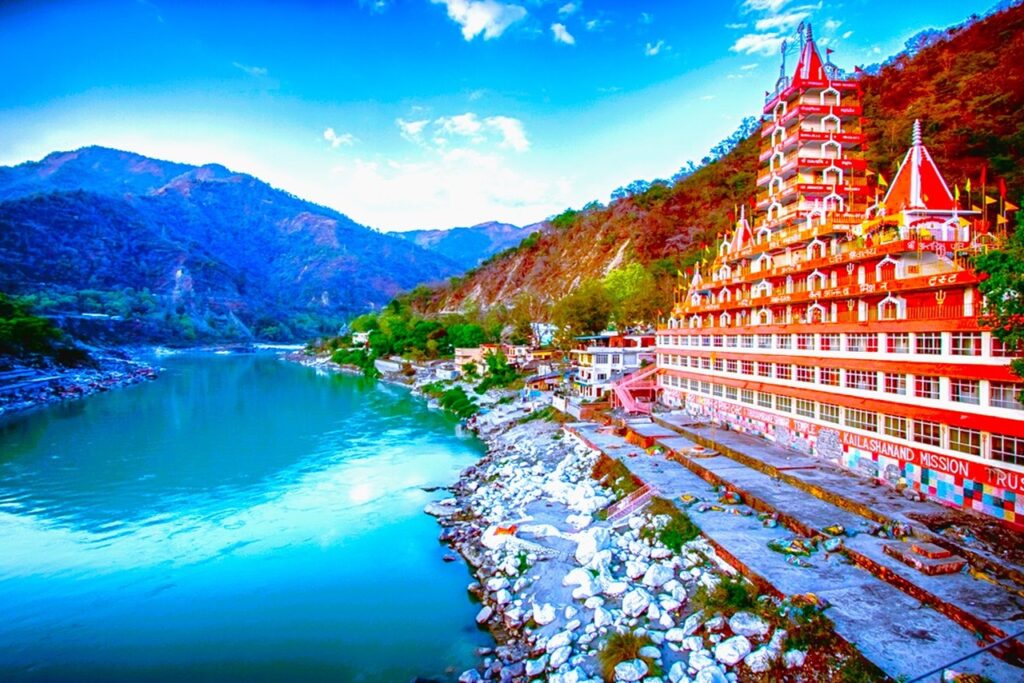Bhilangana river Originating from the snow-clad peaks of Khatling Glacier. The river is a combination of Bhil and Ganga.
Origins and Himalayan Journey
The Bhilangana River originates from the Khatling Glacier, nestled amidst the towering peaks of the Garhwal Himalayas. As the glacial meltwater descends, it forms the Bhilangana. A river that gracefully winds its way through alpine meadows, dense forests, and charming valleys. The Bhilangana gains strength from various tributaries. The Kalyani and Bal Ganga, as it continues its journey through the heart of the Garhwal region.
The Bhilangana, with its crystal-clear waters, becomes a lifeline for the diverse flora and fauna that call the region home.
Ecological Riches and Biodiversity
The Bhilangana River basin is a haven for biodiversity, featuring a variety of plant and animal species. Alpine meadows along the riverbanks are adorned with vibrant flowers.
The river’s flow contributes to the health of these ecosystems, sustaining the lush greenery that characterizes the Garhwal region. The Bhilangana, with its untouched beauty, is a testament to the importance of preserving the natural heritage of the Himalayas. While coniferous and deciduous forests provide habitats for species like the Himalayan tahr, musk deer, and a variety of avian life.
Cultural Significance
Beyond its ecological importance, the Bhilangana River holds cultural significance for the local communities inhabiting the Garhwal region. The river is also an integral part of the cultural fabric, influencing traditions, rituals, and local beliefs.
Villages along the Bhilangana River often celebrate festivals and ceremonies that revolve around the river’s bounty. The flowing waters of the Bhilangana are revered, and rituals dedicated to the river reflect the deep connection between the communities.
Agriculture and Livelihoods
The fertile plains along the Bhilangana River serve as a cradle for agriculture. River supports the livelihoods of the communities that depend on the river’s waters. Farmers cultivate a variety of crops, including rice, wheat, and vegetables. Which are benefiting from the nutrient-rich alluvial soils irrigated by the Bhilangana.
The river’s flow is harnessed for traditional irrigation practices, contributing to the agricultural prosperity of the region. However, the delicate balance between agricultural needs and environmental conservation remains a challenge.
Agriculture and Livelihoods
In recent years, the Bhilangana River has not been immune to the demands of modernization. Hydroelectric projects and dams have been developed along its course to harness the river’s energy for electricity generation. While these projects contribute to the region’s energy needs, they also pose environmental challenges.
The construction of infrastructure can impact the natural ecosystems and habitats along the Bhilangana. Balancing the benefits of hydroelectric power with the preservation of the river’s ecological integrity requires careful planning, environmental assessments, and sustainable practices.
Conservation Efforts and Challenges
Conservation initiatives are essential to safeguard the Bhilangana River and its surrounding ecosystems. Reforestation programs, community-led projects, and awareness campaigns aim to address environmental challenges and promote sustainable practices. However, the region faces ongoing threats from deforestation, pollution, and the impacts of climate change.
Challenges such as soil erosion, landslides, and the potential intensification of natural disasters highlight the need for a comprehensive approach to conservation. Government bodies, local communities, and environmental organizations must collaborate to implement effective measures that balance development with the preservation of Bhilangana’s natural heritage.
The Bhilangana River, with its origins in the majestic Himalayas and its tranquil journey through alpine meadows and dense forests, embodies the pristine beauty and ecological importance of this region. As a tributary of the mighty Bhagirathi, the Bhilangana plays a crucial role in shaping the landscapes and sustaining the biodiversity of the Garhwal Himalayas.
Preserving the Bhilangana requires a harmonious blend of environmental conservation, sustainable development, and cultural appreciation. The river serves as a reminder of the delicate balance between human activities and the natural world, urging us to approach progress with a sense of responsibility and mindfulness.
In embracing the Bhilangana as a vital thread in the Himalayan tapestry, we honor not only the ecological significance of the river but also the cultural and spiritual connections it fosters among the communities that find solace along its banks. The Bhilangana River, with its quiet flow and vibrant ecosystems, stands as a testament to the enduring beauty of the Himalayan landscape and the need to protect such pristine waterways for generations to come.














